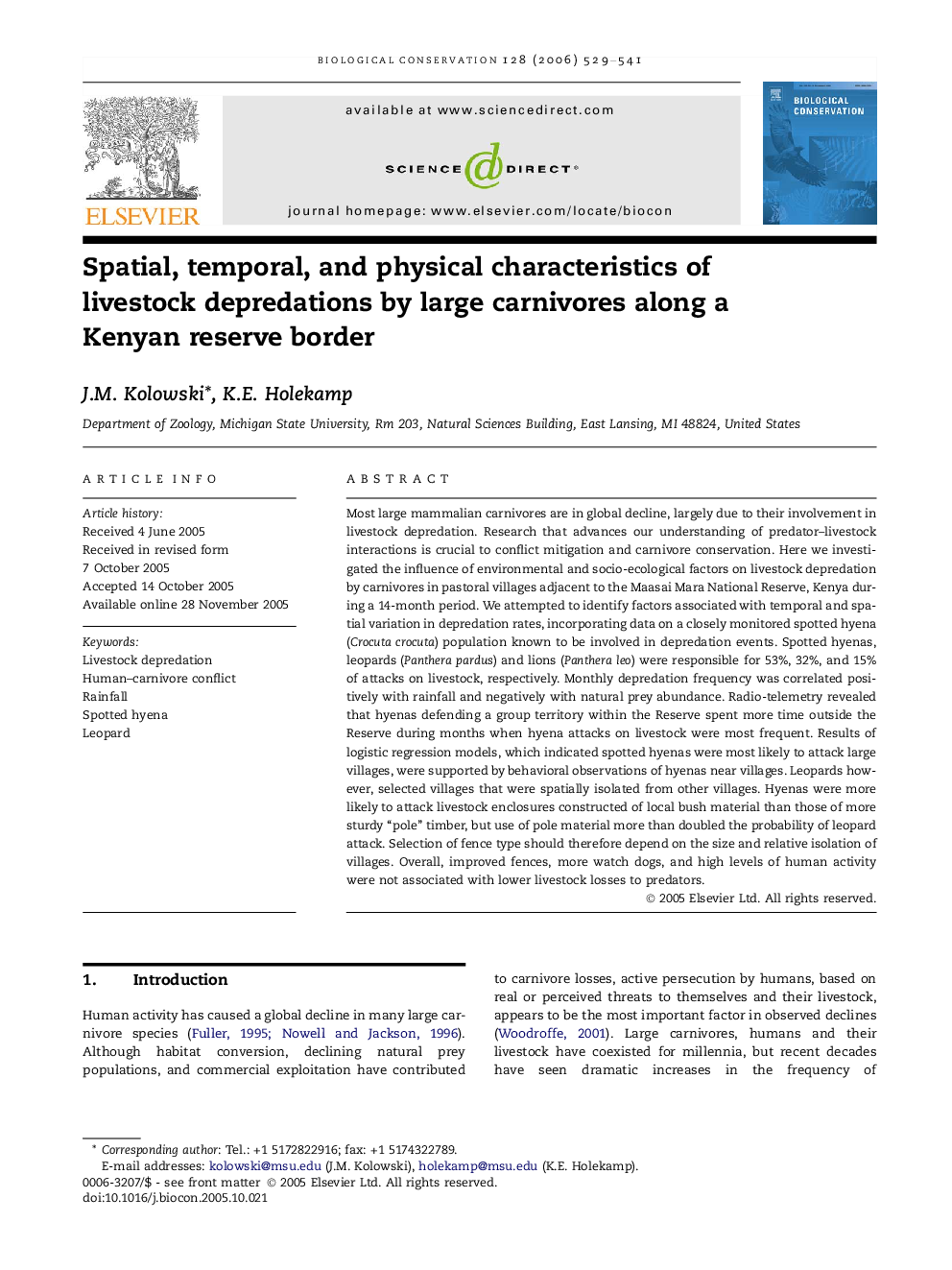| Article ID | Journal | Published Year | Pages | File Type |
|---|---|---|---|---|
| 4387816 | Biological Conservation | 2006 | 13 Pages |
Most large mammalian carnivores are in global decline, largely due to their involvement in livestock depredation. Research that advances our understanding of predator–livestock interactions is crucial to conflict mitigation and carnivore conservation. Here we investigated the influence of environmental and socio-ecological factors on livestock depredation by carnivores in pastoral villages adjacent to the Maasai Mara National Reserve, Kenya during a 14-month period. We attempted to identify factors associated with temporal and spatial variation in depredation rates, incorporating data on a closely monitored spotted hyena (Crocuta crocuta) population known to be involved in depredation events. Spotted hyenas, leopards (Panthera pardus) and lions (Panthera leo) were responsible for 53%, 32%, and 15% of attacks on livestock, respectively. Monthly depredation frequency was correlated positively with rainfall and negatively with natural prey abundance. Radio-telemetry revealed that hyenas defending a group territory within the Reserve spent more time outside the Reserve during months when hyena attacks on livestock were most frequent. Results of logistic regression models, which indicated spotted hyenas were most likely to attack large villages, were supported by behavioral observations of hyenas near villages. Leopards however, selected villages that were spatially isolated from other villages. Hyenas were more likely to attack livestock enclosures constructed of local bush material than those of more sturdy “pole” timber, but use of pole material more than doubled the probability of leopard attack. Selection of fence type should therefore depend on the size and relative isolation of villages. Overall, improved fences, more watch dogs, and high levels of human activity were not associated with lower livestock losses to predators.
